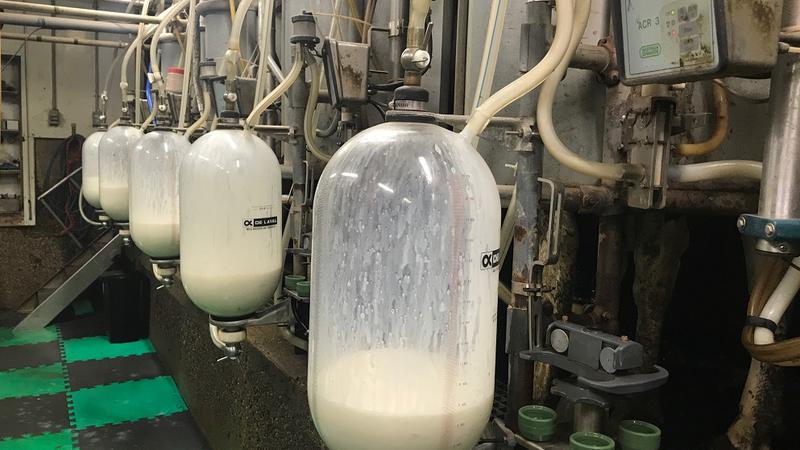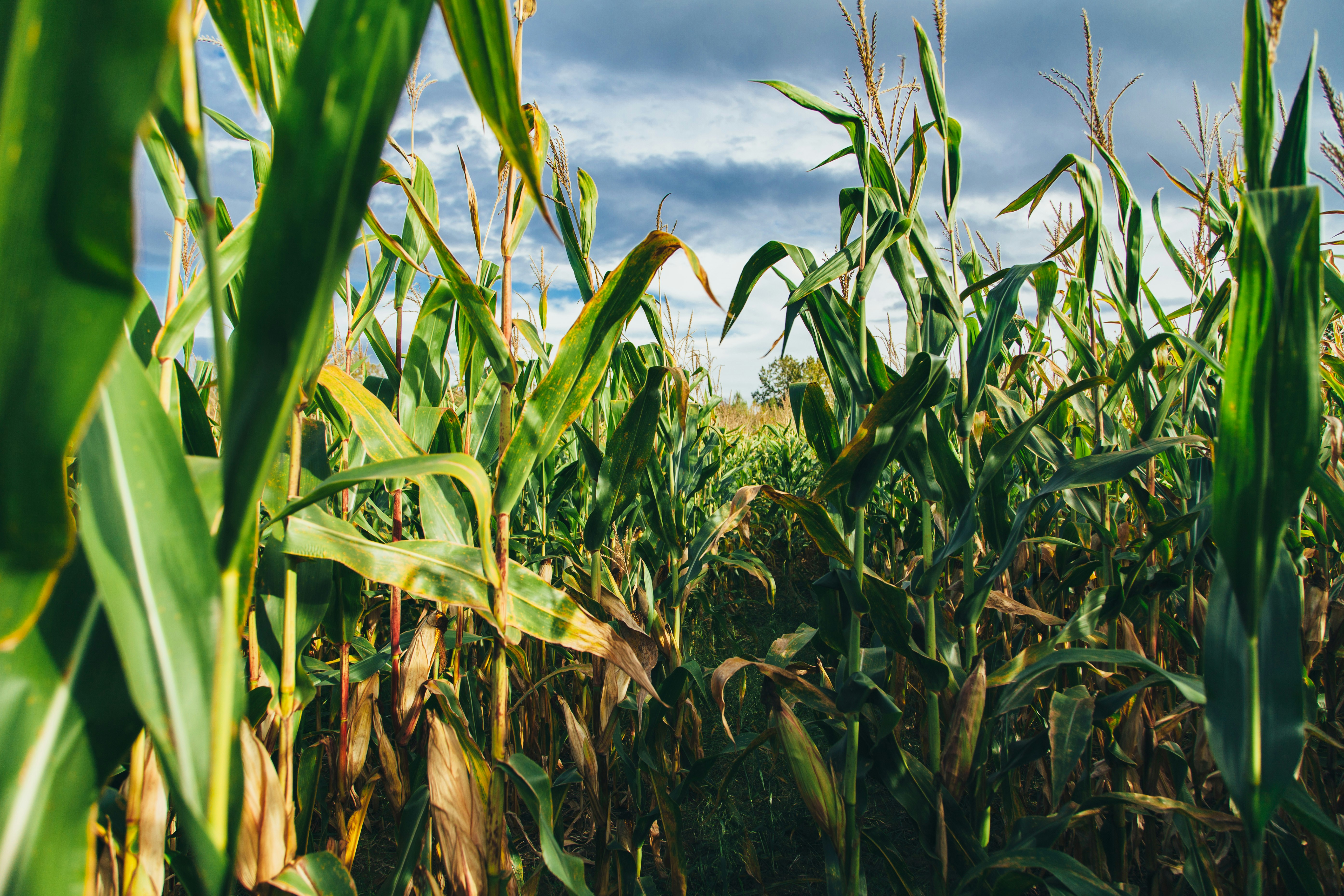The issue of high-ash content in forages is not a new topic of discussion. Many popular press and scientific articles have been published on this common problem in forage production and dairy nutrition.
Among the potential risks from excessive dirt in dairy rations are nutrient reduction, near-infra- red spectroscopy (NIRS) analysis issues, and a greater risk of butyric acid and clostridial issues in silages. I stumbled across a situation recently that made me stop and consider the economic and feed cost considerations of dealing with high-ash forages.
There are numerous resources that share potential solutions for keeping dirt out of forages. We won’t detail that here; instead, we will focus more on what to do when it is too late for that.
When you realize that you have harvested and stored feeds that are high in ash content, you have already bought high-ash feeds, or are considering buying high-ash silages and hays, what is the right way to assess the situation and what is the proper response? As is usual, it depends on a few things. Let’s dig into some of those here.
Look at the lab results
First, let’s talk a minute about the issues that high-ash forages create for NIRS lab analysis. It is often this analysis, after all, that tells us the ash content in the first place. Suffice it to say that the NIRS process can identify high ash and identifies when dirt is present in feeds. In such cases, other nutrients predicted in the process are all suspect.
So, when you see high-ash results in a forage sample, it is best to con- tact the lab and inquire as to the best approach to validate the ash as well as the other key nutrients. At least one forage lab I routinely use makes note of high ash levels and suggests the customer ask for wet chemistry analysis of some key nutrients of interest.
When doing a ration formulation and optimization recently on a lactating cow diet including both alfalfa hay and alfalfa haylage, I kept getting a solution that preferred the hay over the hay silage. This was unexpected and caught my attention, resulting in some further study to understand the surprising result. It was notable since the haylage was significantly lower cost on an equal dry matter basis; it was produced close to the dairy while the dry hay was trucked from some distance away. This is a common reality with farms in the West and, in many cases, the on-farm forage is a small grain and not alfalfa, but the resulting solution could be the same.
Why was the model preferring the more expensive dry hay over the much lower cost haylage? I looked back at the forage analysis and noted a few differences in fiber and protein values, but they were pretty similar. Then I noticed that the ash level on this haylage sample was higher than I would have guessed, and the hay was the opposite. Instead of being the normal 10% to 13% ash in haylage, the analysis for this sample showed around 16%.
The haylage handled nicely, smelled good, and did not indicate any butyric acid. Without the analysis, the haylage would not have been suspect.
After further discussion, though, this haylage was from fields known to be sandy, and there were gopher mounds noted at harvest. Conversely, the hay was on the lower end of normal ash for Western hay at 9%.
To test my “ah-ha” moment, I dropped the haylage ash down to around 10% and reran the optimizer. The solution included as much of the haylage as I would offer, and when the maximum was met, it filled the remainder of the forage needs with the high-cost dry hay, which had the expensive freight.
What was I to do with this result? The haylage was in storage on-farm and needed to be fed. And, from all accounts, it was good forage. How- ever, when I put the ash back at the actual level, forcing it in the ration, it added feed cost to support the same level of milk production. Since the haylage needed to be fed, the feed cost went up.
So, is this all just math? Is it the model thinking like a super computer and not a dairy producer or a practical nutritionist? Maybe. Let’s consider a few variables that might answer that question. I will confess now that I consider the computer smarter than me, and I feel strongly that the careful and consistent use of optimization will, over time, feed the cows better and cheaper.
Don’t pay for dirt
An important question is related to where the haylage came from. This may sound crazy, but if you must feed dirt to your cows, it is much better if you didn’t have to buy it from your neighbor! In this sense, ash in feed is really no different than moisture.
It is the accepted practice to test for moisture and adjust the as-fed price per ton so that neither the feeder nor the grower do better or worse financially for normal swings in the dry matter content of for- ages. This has not always been the case, but I think the battle has been fought and won. How, though, is ash content different?
If the expectation for haylage purchased from the neighbor is a dry matter range of perhaps 40% to 50% with the final price adjusted to a 45% DM basis, why not do the same for ash?
The expectation for ash could be set with an acceptable maximum of 11%, and the price could be adjusted appropriately for elevated ash con- tent. In this case, the dairy would not pay alfalfa prices for field dirt over a reasonable level. Not only would this encourage the grower to take steps to reduce potential ash contamination resulting in better quality feed, but it would also protect the dairy from buying the neighbor’s dirt.
Don’t forget, all of the ash in for- ages is not dirt. In alfalfa, for instance, the important nutrient calcium can approach 2% of the dry matter and potassium can be as high as 3%. The potassium can be good or bad, depending on how the forage is fed.
The ash “in” the plant material is not the problem. It is the ash from dirt mostly accumulated at harvest that needs to be avoided.
With haylages, it is more common for the crop to be grown on land owned by the dairy. In this case, does the high-ash content and the dirt in the forage have the same economic impact? This is a question where I may go out on a limb and speculate a little.
There are research results that suggest when dairy cows encounter high-ash forages, dry matter intake, and thus milk production, is reduced. Other studies show no impact on intake nor milk.
I wonder, though, is there potential that well-preserved, high-ash forages with good fermentation might actually result in higher intakes? Why might this be the case?
In a high-producing dairy cow, bulk fill and undigestible fiber tend to limit intake. If dirt in feed mostly falls to the bottom of the rumen and is washed out in the liquid phase, it would contribute weight to the diet but would not follow any of the intake impacting characteristics of the forage in which it was contained.
Additionally, the energy density of a diet can impact feedback mechanisms that influence appetite. We see this in the real world when cows eat more of a lower energy diet or less of a higher energy diet to meet caloric needs for milk production. In the case of high ash, the energy density of the feed is reduced. Would the cows not try and eat more of the lower energy ration to meet demands? Perhaps.
The goal is well-fed cows
I think it does matter if the high- ash forage is grown on the dairy’s land or purchased from a neighbor. Though low ash is always the over- whelming goal, high ash in purchased forages has a larger negative impact on feed cost. Paying alfalfa prices for dirt is never a way to improve profitability. At the same time, anything, including ash, that results in lower energy density in high-producing dairy rations could result in higher intakes, thus elevating overall feed cost.
One must remember that not all high-ash forages will qualify as “good feed.” However, some will, and no matter if you grew it or bought it, you will eventually feed it.
If high ash levels result in poor fermentation, clostridial risks, and high levels of butyric acid, hopefully you have a neighbor with beef cows or at least enough heifers to dilute and feed it out over time. A well- respected veterinarian and nutritionist I know once said, “Nothing lasts longer than bad feed.”
I hope your high-ash feeds are just an economic conundrum and not the cause of gut health issues, poor reproductive results, or other problems. Think about potential dis- counts for high ash content and be sure the forage lab is helping you by looking out for problematic results. It takes a lot to feed cows well!
Learning more about ash in for- age, how to avoid it, and how to handle it when necessary will help us feed cows better. This is, after all, the ultimate goal!










